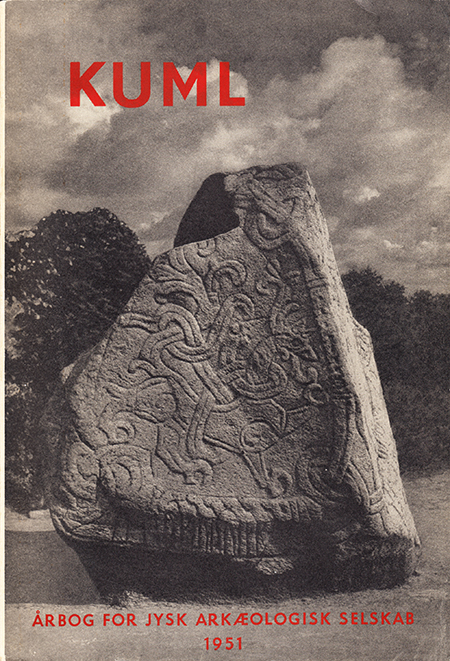Jyllands øde agre
DOI:
https://doi.org/10.7146/kuml.v1i1.24759Keywords:
ager, agre, JyllandAbstract
The abandoned fields of Jutland
Scattered over the heaths of Jutland can be seen rectangular systems of mounds enclosing areas of various sizes (fig. 1). They are the mounds formed by drifting sand around prehistoric fields. Visible evidence of the correctness of this interpretation is provided by the point of the prehistoric plough, whose traces have been identified in several places as dark lines on the surface of the subsoil.
Objects found in association with these fields show that many of them belong to the beginning of the Early Iron Age, or the middle of the first millenium B.C., while the latest sites date to the Later Roman Iron Age, the fourth century A.D. Many of them have only been cultivated for a short time, perhaps only for some few generations. A cattle disease, known in Jutland as "vosk", which raged widely under the two world wars, may provide an explanation of their abandonment.
This disease attacks especially grass-eating domestic animals, particularly the ruminants. It is a deficiency disease, caused by a shortage of cobalt (Co) in the soil in which the animals' foodstuffs grow. It affects chiefly sheep and cattle, and took such a hold during the late war that the entire stock in certain areas died. Its especial virulence during the wars was caused by the stopping of the import of oilcake, particularly of linseed cake.
If the occurrence of prehistoric fields be plotted on a map showing the areas affected by this disease a considerable degree of agreement is evidenced (fig. 2). The deficiency of cobalt which causes the disease is a result of the leaching of the topsoil after the Ice Age, a process which was far advanced in the Jutland heath districts as early as the Stone and Bronze Ages, as sections taken under tumuli have established. The leached topsoil - "podsolized soil" - is especially prevalent in the sandy areas of Jutland, the very areas in which it has resulted in cobalt deficiency and in which the prehistoric fields occur (fig. 3).
This identical distribution of cattle disease, podsolized soil and abandoned fields (figs 2 & 3) mirrors without doubt an internal connection of cause and effect; it is therefore reasonable to believe that it is this same cattle disease which compelled the population of prehistoric times to seek new areas of settlement in Jutland, and perhaps even drove them beyond the frontier. Investigations show that a large proportion of the fields were abandoned in the Celtic Iron Age, which is just the period during which the wanderings of the Cimbri and Teutones took place. If these tribes originated from Jutland then the most important single cause of their colossal campaigns can perhaps be found in the cattle disease here described, the Himmerland "vosk".
P.V. Glob
Downloads
Published
How to Cite
Issue
Section
License
Fra og med årgang 2022 er artikler udgivet i Kuml med en licens fra Creative Commons (CC BY-NC-SA 4.0).
Alle tidligere årgange af tidsskriftet er ikke udgivet med en licens fra Creative Commons.


